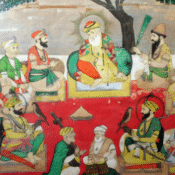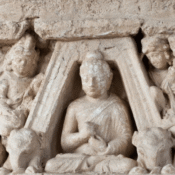
Lahore – The Heart of Pakistan and Cradle of Heritage
Lahore (pronounced Lahor), the vibrant capital of Punjab province, is one of the oldest and most culturally rich cities in South Asia. Often referred to as “The Heart of Pakistan”, “City of Gardens”, or “Paris of the East”, Lahore is a living museum of Islamic, Mughal, Sikh, and colonial history. With over 2,000 years of continuous settlement, it has served as the capital of multiple empires and continues to be a symbol of Pakistani identity, art, architecture, and resistance.
Historical Background
Lahore’s exact origins are shrouded in legend. According to Hindu mythology, it was founded by Lava, the son of Rama, and was once known as Lavapura. Archaeological evidence and historical texts, however, confirm Lahore’s prominence by the 1st millennium CE. Over centuries, it was ruled by:
- Hindu Shahis (pre-11th century)
- Ghaznavids and Ghurids (11th–12th century)
- Delhi Sultanate and Mughals (13th–18th century)
- Sikh Empire under Maharaja Ranjit Singh (1799–1849)
- British Raj (1849–1947)
- Became part of Pakistan in 1947
Each era left its own architectural and cultural footprint, making Lahore a tapestry of civilizations.
Major Historical Sites in Lahore
- Lahore Fort (Shahi Qila)
A majestic citadel originally built in antiquity and later expanded by Emperor Akbar and subsequent Mughal emperors. Key highlights include:
- Sheesh Mahal (Palace of Mirrors)
- Naulakha Pavilion
- Alamgiri Gate (added by Aurangzeb)
The fort is now a UNESCO World Heritage Site.
- Badshahi Mosque
Built in 1673 by Emperor Aurangzeb, it is one of the largest mosques in the world and an icon of Mughal grandeur. Constructed with red sandstone and white marble, the mosque can accommodate over 55,000 worshippers.
- Shalimar Gardens
Commissioned by Shah Jahan in 1641, these Persian-style gardens represent the zenith of Mughal landscape architecture. Divided into three terraces, they feature water channels, fountains, and fruit trees in perfect symmetry.
- Minar-e-Pakistan
A symbol of national pride, Minar-e-Pakistan marks the site where the Lahore Resolution was passed in 1940, laying the foundation for the creation of Pakistan. This white marble tower stands 70 meters tall in Iqbal Park.
- Wazir Khan Mosque
Built in 1634 under the supervision of Governor Wazir Khan, this mosque is a masterpiece of mosaic tile work, calligraphy, and frescoes. Its vibrant colors and detailed ornamentation are unparalleled in South Asia.
- Tomb of Jahangir
Located in Shahdara Bagh, this is the only Mughal emperor’s tomb in Pakistan. Constructed by his son Shah Jahan, it is noted for its beautiful pietra dura inlay and gardens.
- Hazuri Bagh Baradari
An elegant white marble pavilion built by Maharaja Ranjit Singh in 1818 between the Badshahi Mosque and Lahore Fort. It was used for state functions and royal ceremonies.
- Samadhi of Maharaja Ranjit Singh
This Sikh architectural marvel houses the remains of Maharaja Ranjit Singh, the founder of the Sikh Empire. Located near the Badshahi Mosque, the samadhi combines Hindu, Muslim, and Sikh styles.
- Delhi Gate & Walled City of Lahore
One of the thirteen historic gates of the Walled City, the Delhi Gate leads into a labyrinth of narrow streets, havelis (mansions), bustling bazaars, and shrines. The area is rich with Mughal-era architecture and cultural heritage.
- Anarkali Bazaar and Tomb
Named after the legendary courtesan Anarkali, the bazaar is one of the oldest surviving markets in South Asia. Nearby lies the Tomb of Anarkali, believed to be the burial site of the fabled lover of Prince Salim (Jahangir).
British Colonial Heritage
During the British Raj, Lahore was transformed into a modern metropolis with Victorian and Gothic Revival buildings. Notable structures include:
- Lahore Museum (featured in Kipling’s novel Kim)
- Government College University
- Punjab University
- General Post Office (GPO)
- Aitchison College
- Lahore High Court
These institutions continue to play a major role in education and culture.
Cultural Significance
Lahore has always been a cultural capital of the subcontinent. From Sufi shrines (like Data Darbar) to classical music, literature, and qawwali, the city has nurtured some of the greatest minds and artists, including:
- Allama Iqbal (philosopher-poet)
- Faiz Ahmed Faiz
- Amrita Pritam
- Ustad Nusrat Fateh Ali Khan
Modern Lahore and Preservation
Today, Lahore is a booming megacity, yet it continues to preserve its heritage through initiatives like the Walled City of Lahore Authority (WCLA). Restoration projects and tourism efforts aim to keep its timeless beauty alive.
Legacy
Lahore’s legacy is one of pluralism, resilience, and creativity. A city that has witnessed empires rise and fall, it stands today as a proud guardian of South Asian history and identity.




